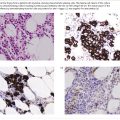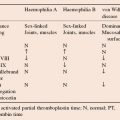Stem cell transplantation (SCT) (Fig. 38.1) is the use of haemopoietic stem cells (HSC) from a donor harvested from peripheral blood (peripheral blood stem cells; PBSC) or bone marrow, to repopulate recipient bone marrow.
Allogeneic SCT involves transplantation of HSC from one individual to another. This is usually between two human leucocyte antigen (HLA) matching individuals, most frequently siblings but, in their absence, volunteer HLA-matched unrelated donors (MUD) are increasingly being used. HLA matching includes class I (A, B) and class II (DR) tested by molecular typing. If the donor is an identical twin, the transplant is termed ‘syngeneic’. Conventional allogeneic SCT requires the recipient to receive high-dose chemotherapy and often radiotherapy. It is rarely performed in individuals >65 years of age, as it carries risk of treatment-related morbidity and even mortality (up to 5–10%), which increases with age.
Low intensity ‘mini’ allogeneic transplants are particularly used for older patients (>60 years), because there is less risk of transplant related mortality and morbidity. Less intensive chemotherapy and radiotherapy are used to immunosuppress the recipient. The infused donor stem cells populate the bone marrow and help to completely eliminate the recipient’s haemopoietic and immune systems, as well as any residual disease.
Autologous SCT utilizes the patient’s own stem cells. These are harvested from the patient and then used to repopulate the marrow after further high-dose chemotherapy and/or radiotherapy. Autologous SCT may be performed more safely in older patients, up to 70 years.
Cord blood transplantation utilizes fetal stem cells harvested at the time of birth from the umbilical cord. It is particularly useful in children. Adults may need two cord blood donations.






